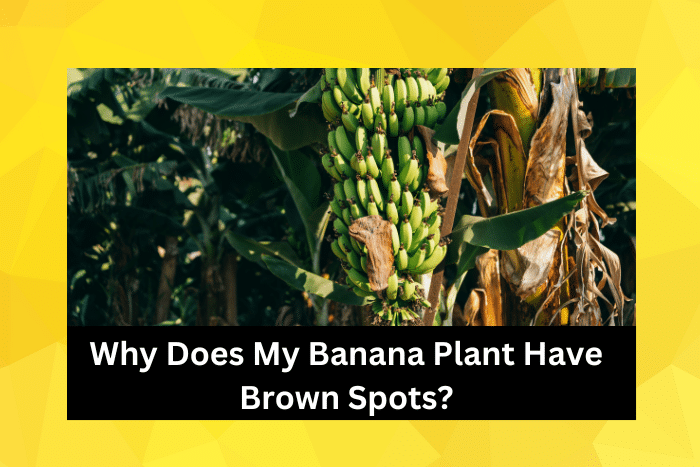It’s a worrying time, but why does my banana plant have brown spots?
No matter how well you care for your banana plants, the last thing you want to see is something out of the ordinary.
And you know as well as me that brown spots on the leaves can’t be a good thing.
So, allow me to explain the variety of reasons why your banana plant’s leaves aren’t completely lush green in color.
There are numerous reasons why your banana plant has brown spots. The most common of these is due to overwatering or inadequate drainage, which can lead to rot. Additionally, temperatures that are either too hot or too cold, especially for extended periods, can cause brown spots on the leaves. Then again, this could be something as simple as fertilizer burns. A wide variety of bugs also happen to feed on banana plants and their leaves. Plus, there are a number of fungal diseases that can cause brown spots.
1. What is the Importance of Water and Drainage?
The main reason that your banana plant has brown spots is due to water, either excess watering or insufficient drainage.
If you overwater your banana plants, this can lead to rot, which is typically visible by brown spots on the leaves or even on the pseudostem.
Furthermore, your plants require adequate drainage.
This can be impacted by a pot that is too dense or simply that the pot is too large for the size of your banana plant.
In effect, the plant and the pot are holding onto a lot of excess moisture, which will eventually lead to rot.
The solution would be to repot your banana plant in the correct-sized pot.
However, you should initially check the corm and the roots for signs of rot.
You can also add course material, such as perlite or orchid mix, which will help with proper drainage.
2. What Happens in Extreme Temperatures?
Extreme temperatures, either way, can also cause brown spots on your banana plant.
Firstly, banana plants can actually suffer from sunburn.
This will generally occur if your plant is always in direct sunlight.
And this is especially true during very high temperatures.
You’ll notice that the leaf edges and tips can turn brown and will be very brittle to the touch.
Unfortunately, for most banana species, the exact same can be said for extremely cold weather.
Banana plants have the ability to survive in extreme cold.
However, extended exposure to cold will start to cause problems.
Initially, this may cause brown spots, although things can get worse very quickly.
In fact, if the temperature drops below 60F, then this can stunt a banana plant’s growth, as well as darken or kill the foliage.
With that being said, it is rare for a banana plant to die, even during prolonged freezing temperatures.
This is because the underground rhizomes will remain alive, although your plant will literally have to start from scratch in the spring.
Just be aware that the rhizomes will also die if your banana plant is exposed to temperatures below 22F for over a week.
3. What is Fertilizer Damage?
Something else to consider is that the brown spots are “burns” created by too much fertilizer.
This is actually a fairly common scenario.
What often happens is that the leaves emerge prematurely due to the overuse of fertilizer.
In essence, the cell walls of the leaves have insufficient calcium and potassium in order to protect themselves from the elements.
I’ve already spoken of how excessive extremes of either temperature may cause brown spots.
Well, this can be aggravated by the overuse of fertilizer.
7 Signs of Over-Fertilized Plants
4. What About Bugs and infections?
The final reason for brown spots on your banana plant could be down to a variety of bugs, pests, diseases, and infections.
Some of the more common pests to keep an eye out for include aphids, moths, caterpillars, thrips, ants, and weevils.
Any one of these pests will typically suck on the sap of banana leaves (which is what produces the brown spots) and, on occasion, even the fruit itself.
There also happen to be various fungal diseases that can attack banana plants.
These include anthracnose, fruit speckle, crown rot, rhizome soft rot, and the aptly named banana leaf rust and leaf speckle.

Final Thoughts
So, as you can see, there are numerous reasons that your banana plant may have brown spots.
Admittedly, this is most commonly caused by overwatering or poor drainage.
However, extreme temperatures (either way), as well as fertilizer burns, may also be an issue.
And, of course, any type of damage to your banana plant can also be due to numerous pests and fungal diseases.
While we are on the subject of fruit tree problems, find out if it’s possible to grow banana plants in clay-based soil.
